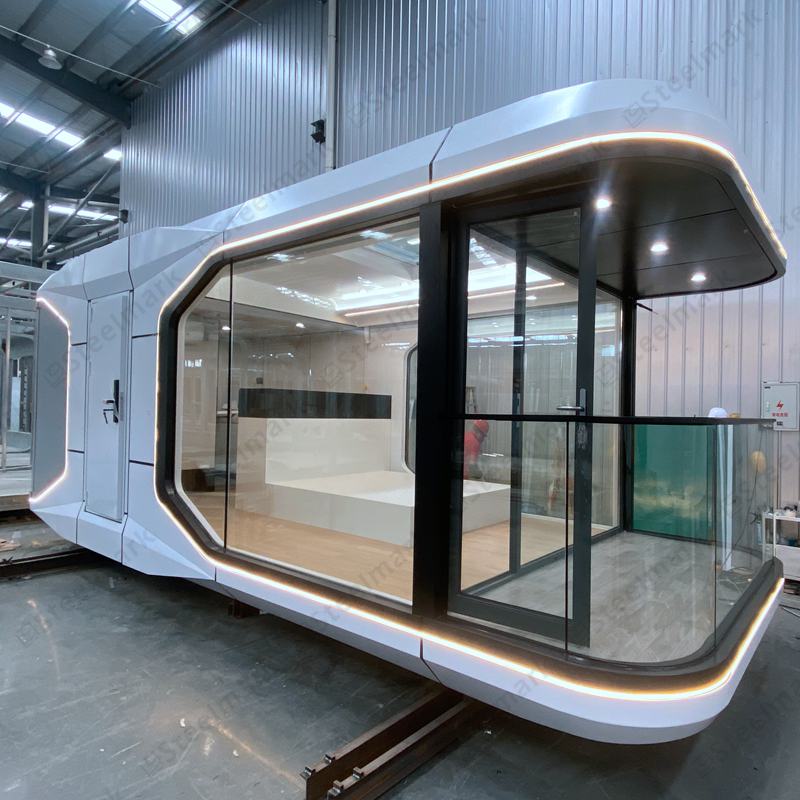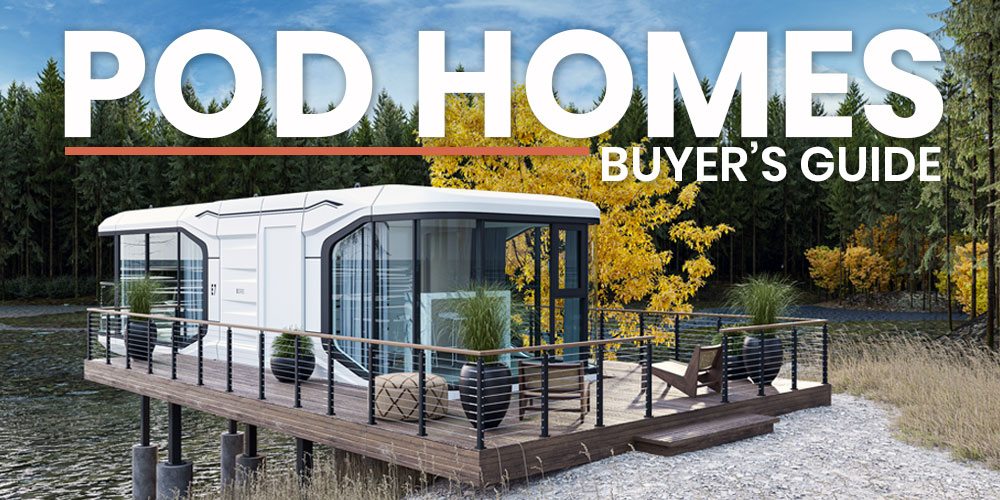Why Hohabitats Modular Home Is the Future of Sustainable Housing
Why Hohabitats Modular Home Is the Future of Sustainable Housing
Blog Article
Why Modular Residences Are the Future of Lasting Living
Modular homes are increasingly acknowledged as a critical option for lasting living, supplying a mix of efficiency, cost-effectiveness, and environmental benefits. Their building in regulated environments significantly minimizes waste and boosts precision, while the capacity for including sophisticated energy-efficient systems positions them as a forward-thinking choice in real estate. The versatility of modular styles enables for the combination of lasting technologies and materials tailored to individual requirements. As we browse the difficulties of urbanization and ecological sustainability, one have to take into consideration how these homes might redefine our technique to living areas.
Ecological Benefits of Modular Homes
The ecological advantages of modular homes stand for a considerable action toward lasting living. These homes are built in controlled factory setups, which significantly lowers waste produced throughout the structure process. By enhancing products and reducing excess, modular construction adds to a more effective use resources compared to standard building techniques.
Furthermore, modular homes are commonly made with power efficiency in mind. Numerous integrate advanced insulation strategies, energy-efficient windows, and sustainable products, contributing to lower energy intake. This can cause reduced greenhouse gas emissions over the life-span of the home, enhancing its general ecological profile.
The capacity to transport and assemble modular components on-site additionally reduces the carbon impact connected with building logistics. In addition, lots of modular homes are constructed to be versatile and quickly upgradeable, enabling house owners to apply sustainable modern technologies, such as solar panels and energy-efficient furnace, over time.
Ultimately, the environmental advantages of modular homes not just promote lasting living but also encourage a more accountable technique to housing advancement, straightening with international efforts to deal with environment adjustment and maintain natural sources for future generations.
Cost-Effectiveness and Cost
Structure a home frequently stands for among the largest financial investments individuals make in their life time, and modular homes supply a compelling solution for those seeking cost-effectiveness and price. Among the primary benefits of modular homes is their reduced construction expenses contrasted to standard site-built homes. The structured production process enables significant savings on labor and materials, which converts to lower costs for consumers.
Furthermore, modular homes commonly have shorter building and construction timelines. This not only minimizes expenses associated to financing and insurance coverage but likewise minimizes the threats related to rising cost of living and varying market problems. Many purchasers find that modular homes can be personalized to fit their budgets without sacrificing high quality or design.
Additionally, power effectiveness is often constructed right into the layout of modular homes, leading to minimized utility expenses over time. Numerous suppliers focus on sustainable products and methods, additionally boosting the long-term financial practicality of these homes. Generally, the mix of initial expense financial savings, quick building and construction, and recurring energy efficiency makes modular homes an eye-catching alternative for those wanting to purchase sustainable living without damaging the bank.
Efficiency in Building
Modular homes not just provide financial advantages yet also master building and construction effectiveness. The modular building process involves the simultaneous building of components in a manufacturing facility setting while site prep work occurs simultaneously. This identical method dramatically lowers the total timeline from conception to completion, usually reducing building time by as much as half contrasted to typical approaches.
Additionally, factory-controlled atmospheres improve quality control. By utilizing precision production techniques, modular homes are developed to specific specifications, lessening waste and mistakes. This consistency not just causes a higher high quality product yet also adds to lasting practices by lowering material waste during building and construction.
Additionally, the usage of contemporary technology and automation in the manufacturing procedure enables quicker setting up and reduced labor prices. Once the modules are carried to the site, they can be efficiently assembled, further quickening the timeline. This structured process is not just advantageous for building contractors however additionally decreases disruptions to the surrounding environment during building.
Personalization and Style Versatility
An excellent selection of personalization alternatives identifies modular homes, allowing house owners to customize their living spaces to satisfy details requirements and preferences. This layout adaptability is a characteristic of modular building, enabling customers to choose every little thing from flooring strategies and area formats to fixtures and finishes. Unlike traditional homes, modular designs promote a collective strategy where architects and builders function very closely with property owners, ensuring that each aspect straightens with visual wishes and private way of lives.
Moreover, modular homes can be easily reconfigured or broadened, fitting altering household characteristics or developing personal tastes. This flexibility not just enhances the home's performance but additionally adds to long-lasting sustainability, as homeowners can modify their spaces rather than look for brand-new real estate remedies.

Future Trends in Lasting Housing
Arising fads in sustainable housing are reshaping the landscape of property building and construction, stressing ingenious technologies and eco-friendly methods. One substantial pattern is the assimilation of clever home innovation, which improves power effectiveness with automated systems that keep an eye on and maximize energy usage. This not just decreases energy prices however also adds to a reduced carbon footprint.
In addition, using sustainable products is coming to be progressively usual. Home builders are going with reused, locally sourced, or rapidly sustainable materials, which reduce environmental effect and assistance regional economic climates. Furthermore, modular homes are getting popularity for their lowered waste during construction and their versatility to different terrains and climates.
One more pattern is the incorporation of eco-friendly roofing systems and living walls, which boost air quality and give natural insulation. These functions also promote biodiversity in metropolitan areas.
Conclusion
To conclude, modular homes become a critical service for sustainable living, providing considerable ecological benefits via lowered waste and power effectiveness. Their cost-effectiveness and affordability address the growing real estate demands in urban locations, while from this source effective building and construction processes enhance read the article total performance. The fundamental customization and design flexibility satisfy diverse preferences and requirements. As patterns in sustainable housing develop, modular homes are positioned to play an essential role in advertising environmentally friendly living methods for future generations.
Structure a home often represents one of the biggest financial investments people make in their lifetime, and modular homes supply a compelling remedy for those seeking Read Full Article cost-effectiveness and cost. One of the primary benefits of modular homes is their reduced building and construction costs contrasted to conventional site-built homes. On the whole, the mix of first cost financial savings, rapid building and construction, and continuous energy performance makes modular homes an attractive option for those looking to spend in lasting living without damaging the bank.
Inevitably, the modification and style adaptability provided by modular homes ensure that they are not simply structures, yet individualized refuges that show the unique identifications of their residents while advertising lasting living techniques.

Report this page